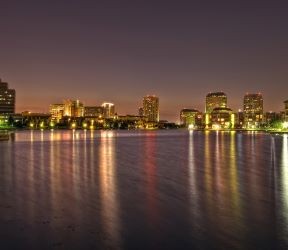1. A Slice of Community Culture
An event’s location has a lot of impact on whether attendees feel up to travelling to a destination. You can peg the speakers, sessions, exhibitors, networking receptions, and food and beverage, but if the city that's hosting your convention or meeting doesn't entice people, it's going to show in the attendance numbers. You can, however, coax potential attendees off the fence by choosing a city in which the convention center is in the heart of the dining, nightlife, shopping, and cultural experiences available -- where excitement is just a few steps away from your venue.
2. Walking the Walk
Studies show that sitting is the new smoking and a renewed focus on health and sustainability has caused many to shun cars in favor of walking, cycling and public transit. Attendees prefer a nearby selection of eateries and entertainment rather than restaurants that are a 15-minute cab ride away. Wellness is the latest focus in meetings and events and walking is a free, easy and effective way to channel that mindset into everyday habits. Walking also allows attendees a bit more freedom in the timing of their days. They don’t have to adhere to a strict lobby call time and can travel at a pace that comes naturally to them.
3. A Penny Saved is a Penny Earned
Well-designed convention districts, where everything is accessible by public transportation, walking or pedicab, cut costs on transportation and logistics. Think about how much time and money will be saved not dealing with shuttle services, transport vehicles and/or rideshare services. Planners can then put the extra money towards bonuses such as complimentary drinks, tangible takeaways or elevated amenities. Groups will appreciate the increased flexibility as well as the swag that comes as a result of alternative transportation methods.
4. Safety First
When you have people living and working in an intentionally developed convention center district, it never shuts down. Your restaurants, shops, and attractions are especially vibrant and open later so conventioneers and attendees can feel safer exploring the area. Additionally, hotels will be closer and onsite staff and concierges will be well-versed in the area, adding a second layer of protection. Also, groups tend to travel together – especially when exploring an area by food – and we all know there is safety in numbers.
5. More Options = More Fun
A convention facility surrounded by live music, dining, and fun gives meeting planners more great options for onsite and offsite events and attendees more options for nearby networking. Everyone knows there’s nothing that bonds a team quite like happy hour drinks or a nightcap and when the area boasts a vibrant nightlife, the possibilities for fun are endless. These types of visitor districts also make planning fun for organizers. They can organize team-building activities such as beer/wine tastings, dine arounds and scavenger hunts with ease.
Irving, Texas
With a walkable entertainment and visitor’s district anchored by the convention center and the new, modern Westin headquarter hotel, Irving is on trend with tons for attendees to do during their free time. Once they’re here, they won’t have to go far to experience something new or tried and true, as (almost) everything is a stroll away.
Outside the Irving Convention Center’s doors is the new Toyota Music Factory, an entertainment complex with an indoor/outdoor amphitheater, a festival plaza, a Cineplex, and more than 20 dining options. The concert lineup at the Pavilion at the Toyota Music Factory will compete with any big-time arena in the country, and venues all around town offer live local music.
Indeed, Irving, is embarking on an extraordinary, unparalleled adventure that is already the talk of meeting planners and travel circles. Want to come? Give us a call, and we'll give you the inside information on everything from premium meetings facilities and amenities to must-see music, museums and eateries that both visitors and locals just can't get enough of.
Sponsored Content is submitted by our advertisers and does not represent the views of Meetings Today or its publisher, Stamats Communications. Content may be edited for clarity and style.






